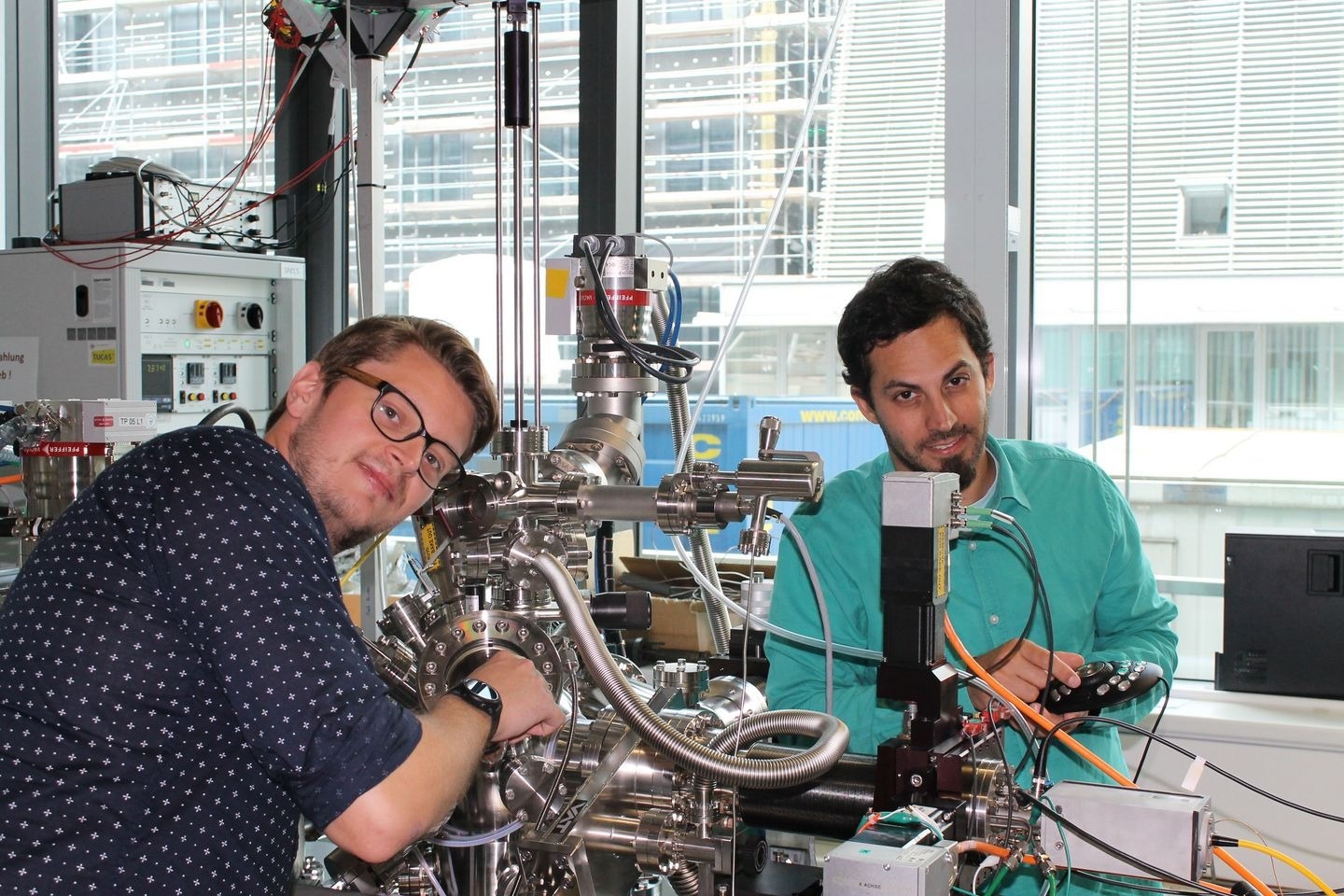Methane and CO2 can be converted into useful products. However, up until this point, the catalysts needed for these reactions quickly lost their potency. Now, TU Wien has created more reliable alternatives.

Florian Schrenk (left) and Christoph Rameshan. Image Credit: Vienna University of Technology.
Wherever it is impossible to stop the generation of harmful greenhouse gases, they should be turned into something beneficial; this strategy is known as “carbon capture and utilization.” For this, specialized catalysts are required.
To date, the problem has been that a layer of carbon rapidly forms on these catalysts, known as “coking”, and the catalyst loses its effect.
At TU Wien, a novel strategy was used: through careful pre-treatment, small metallic nanoparticles were created on perovskite crystals. The desired chemical reaction thus occurs without the dreaded coking effect thanks to the interaction between the crystal surface and the nanoparticles.
Dry Reforming: Greenhouse Gases Become Synthesis Gas
The two greenhouse gases produced by humans that have the greatest impact on climate change are carbon dioxide (CO2) and methane. Both gases frequently coexist, for instance in biogas facilities.
So-called methane dry reforming is a method that can be used to convert both gases into useful synthesis gas at the same time. Methane and carbon dioxide are turned into hydrogen and carbon monoxide—and it is then relatively easy to produce other hydrocarbons from them, right up to biofuels.
Christoph Rameshan, Professor, Institute of Materials Chemistry, Vienna University of Technology
The major issue is the stability of the catalysts.
Florian Schrenk, who is working on his dissertation in Rameshan’s team, states, “The metal catalysts that have been used for this process so far tend to produce tiny carbon nanotubes.” These nanotubes inhibit the catalyst by depositing it as a black layer on its surface.
Perovskite Crystals as the Key to Success
The researchers have developed a catalyst with fundamentally different properties.
We use perovskites, which are crystals containing oxygen, which can be doped with various metal atoms. You can insert nickel or cobalt, for example, into the perovskite—metals that have also been used in catalysis before.
Christoph Rameshan, Professor, Institute of Materials Chemistry, Vienna University of Technology
The nickel or cobalt atoms go to the crystal’s surface and form nanoparticles there after a particular pre-treatment with hydrogen at about 600 °C. The nanoparticles’ size is very important: Nanoparticles having a diameter of 30 to 50 nm have proven successful. The required chemical reaction subsequently occurs on these microscopic grains, but the oxygen in the perovskite hinders the growth of carbon nanotubes at the same time.
Florian Schrenk says, “We were able to show in our experiments: If you choose the right size of nanoparticles, no carbon film is created—coking is no longer a danger. Moreover, the nanoparticles are stable, the structure of the catalyst does not change, it can be used permanently.”
Important Building Block for Tomorrow’s Bio-Refinery
Wherever CO2 and methane are created concurrently, as is frequently the case when working with biological material, such as in biogas facilities, the innovative perovskite catalysts could be utilized. The composition of the resulting synthesis gas can vary depending on the reaction temperature used. In this approach, the further conversion of greenhouse gases into useful products could contribute to the development of a sustainable circular economy.
Journal Reference
Schrenk F., et al. (2022) Impact of nanoparticle exsolution on dry reforming of methane: Improving catalytic activity by reductive pre-treatment of perovskite-type catalysts. Applied Catalysis B: Environmental. doi.org/10.1016/j.apcatb.2022.121886.